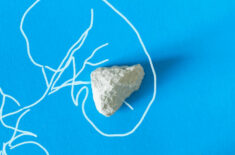Overview
Itchy skin can be the result of various potential causes like allergic reactions, bug bites, hives, eczema, atopic dermatitis, sunburns, or overly dry skin.
Constant scratching can lead to irritated skin.
The course of treatment will depend on the underlying cause of itchy skin.
Common over-the-counter treatment options include antihistamines, hydrocortisone cream, or calamine.
If you’re looking for natural options, then consider using essential oils.
Essential Oils As Natural Remedies For Skin Conditions
Essential oils (EOs) are highly concentrated plant extracts that contain many active chemicals known to help support health and healing.
Aromatherapy is an alternative medicine and holistic healing treatment that uses EOs for therapeutic purposes.
You’ll find that many skin care products include EOs in their ingredients because they’re effective at treating multiple skin conditions like:
Essential oils possess antiseptic and anti-inflammatory properties.
They also help support the immune system and can help reduce the risk of infections.
The Best Essential Oils For Itchiness
Tea tree oil
Tea tree essential oil is well-known for its potent anti-inflammatory properties.
It’s also an antiseptic, antibacterial, antifungal, antiviral, and antimicrobial which is all excellent for preventing infections.
Chamomile oil
Is a pain reliever and also an anesthetic.
It helps prevent infections and is anti-inflammatory.
It’s known to soothe itchy skin.
Peppermint oil
Peppermint essential oil is a potent pain reliever and a local anesthetic that also serves as an antibacterial, and anti-inflammatory.
Because of one of its main active compounds called menthol, it gives off a cooling sensation when inhaled or applied topically.
Lavender oil
Lavender essential oil is a pain-reliever, antibacterial, antifungal, and antiseptic.
It also helps stimulate wound healing while repelling insects.
It’s usually gentle enough for sensitive skin types.
Lemongrass essential oil
Not only is lemongrass an anti-inflammatory, antiseptic, antiviral, antibacterial, and antimicrobial, it’s also an analgesic which means it reduces pain and discomfort from itchiness and swelling.
It’s also an insect repellant which makes for great insect bite prevention too.
Other oils that may help relieve itching are:
- Frankincense oil
- Eucalyptus oil
- Bergamot oil
- Geranium oil
Safety Concerns
- When used safely, EOs usually offer little to no side effects.
- When used topically as a natural aid to reduce fevers, EOs must always be diluted in a carrier oil to prevent skin irritation and reactions. (Especially if you have sensitive skin.)
- It’s advisable to perform a patch test on a non-affected area of the skin and wait 24 hours to confirm no allergic reaction.
- If you experience any adverse reaction to any oil, discontinue use immediately and consult your dermatologist to seek medical advice.
- Some oils are not suitable for babies, young children, and pregnant or nursing women. Research the contraindications for each oil you use prior to applying them.
- EOs aren’t regulated by the FDA (Food & Drug Administration), so it’s essential to do your research before buying products to make sure they aren’t diluted or contaminated.
- Always choose high-quality, certified organic, and therapeutic grade products to make sure you’re experiencing the full medicinal benefits.
How To Use Essential Oils For Itch Relief
Always dilute your essential oils with a carrier oil like coconut oil, jojoba oil, or olive oil.
Stick to 2-3 drops of EO per 1 teaspoon of carrier oil.
Create your own lotion by mixing and blending EOs with carrier oils.
This will enhance the medicinal benefits of the oils and also has a moisturizing effect that will help soothe itchiness.
Apply the lotion to the affected areas at least twice a day for best results.
Using a diffuser for itchy skin isn’t as effective as topical application.
A DIY Essential Oil Recipe: Anti-Itch Lotion
- 3 drops chamomile
- 2 drops lemongrass
- 2 drop tea tree
- 2 drop peppermint
- 1 tablespoon witch hazel
- 2 tablespoons fractionated coconut oil
Mix all ingredients together in a dark glass bottle with an airtight lid.
Apply the mixture to the affected area with your clean fingers, cotton swab, or cotton ball.
Repeat as needed.












